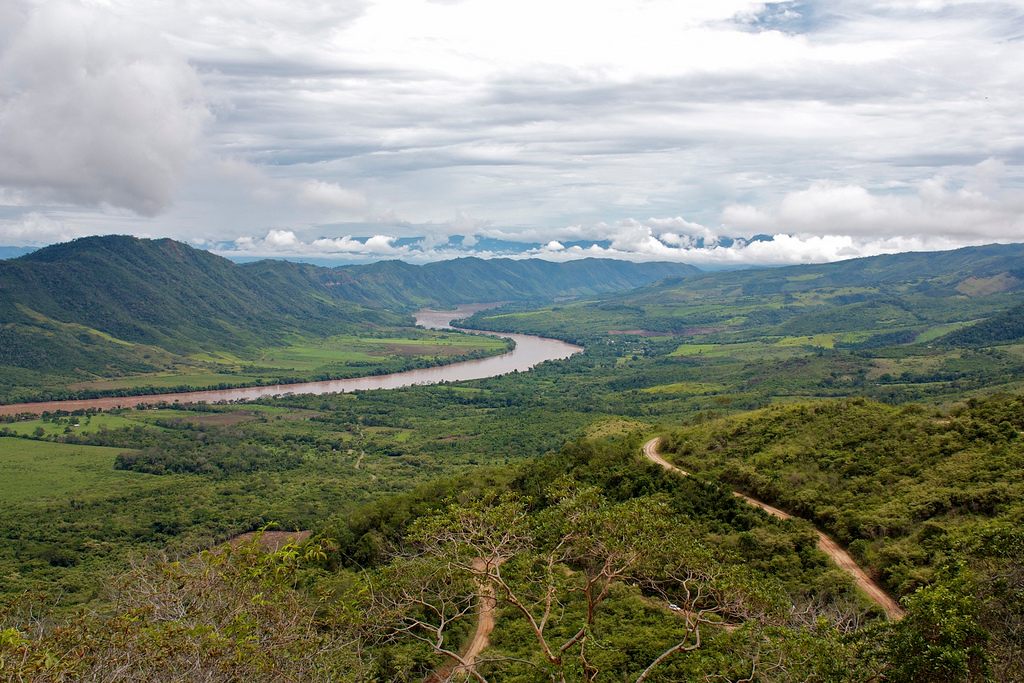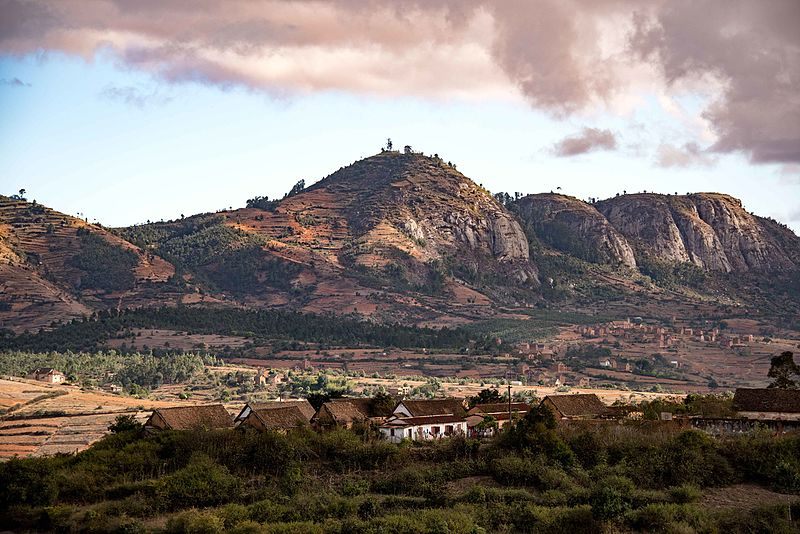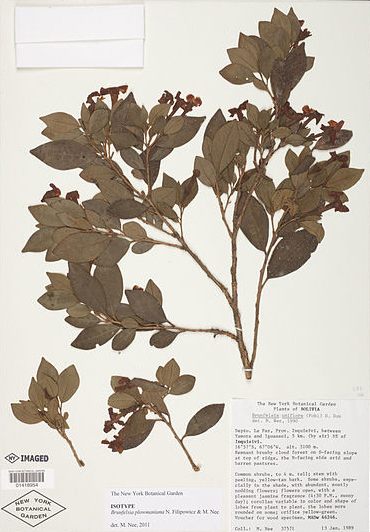The 25-Year Battle For a Folk Remedy from the Rainforest to Gain FDA Approval

A view of an Amazon tributary in Peru. (Photo: Paul Alexander/flickr)
Steven King had to learn the hard way that wearing G.I.-style boots in the Amazon jungle was not a good idea.
It was the late 1970s, and King, a young ethnobotanist, was studying diet and medicinal plants through the Amazonian Anthropology and its Practical Application Center, in Peru, while working for a tribe of Secoya people who lived in the forest. During his nine month stay, King learned to hunt and helped the tribe clear small sections of the forest so they could plant gardens. King also spent an inordinate amount of time tending to his footwear, and to his feet, which, in the dampness of the Peruvian Amazon, had succumbed to fungal infections and blisters.
“I learned that the smart thing to wear are sandals, or no shoes at all,” King recalls. He also learned to treat his wounds using sap from a local tree called Sangre de Drago. Meaning Dragon’s Blood in English, the name is both poetic and precise, since the sap of the tree is bright red, and stands out vividly against the reptilian-looking bark, which is stubbly, grey and usually covered in moss. Valued for its medicinal properties, the sap has been used widely across South America to treat everything from upset stomachs to colds, and because it contains latex, it’s also a liquid bandage, forming a second skin over open wounds. It was the only thing that relieved King’s burning feet.

Sangre de Grado, or Dragon’s Blood. (Photo: por natikka/WikiCommons CC BY 2.5)
Eventually, King’s personal discovery would also help launch a near-epic journey to bring that blood-red sap to the U.S. pharmaceutical market. It was a process that lasted decades and weathered the boom and bust of the dot com era, the crisis of the AIDS epidemic, a backlash against bio-prospecting, and trends around eco-activism, as it wended its way towards FDA approval. Twenty five years later, the tale of the blood red sap is both hopeful and cautionary, a window onto the history of finding cures in the rainforest, as well as the pitfalls and complications of bringing those cures to market.
Coming up as a young ethnobotanist, King, who is now Senior Vice President at Napo Pharmaceuticals, where he oversees sustainable supply, ethnobotanical research and intellectual property, was mentored by Dr. Richard Schultes, who is often described as “the father of ethnobotany”, “a swashbuckling plant hunter,” and “the last great explorer of the Victorian tradition,” in his 2001 New York Times obituary.
Those monikers bear the patina of romance, as well as the stain of white privilege. And yet Schultes’ field work is still widely revered. His books on hallucinogenic plants like peyote and ayahuasca were cultural touchstones for William Burroughs, Aldous Huxley, and other psychedelic explorers (most of whom Schultes roundly denounced). And his research into plants that produced curare–a poison applied to arrows, mostly for hunting monkeys and other prey–in the 1940s and 50s became foundational. Today, a diluted form of the poison curare is used as a muscle relaxer in surgery, and many plants that he collected still bear his name, including the orchid Pachyphyllum schultesi.

Dr. Richard Evan Schultes in the Amazon. (Photo: Public Domain/WikiCommons)
In the decades that followed, a new generation of ethnobotanists set out to find cures in the Amazon with Schultes’ name on their lips. There was Tim Ploughman, who collected more than 700 specimens of coca plant, making him a foremost authority on the plant from which cocaine derives. (The nightshade species Brunfelsia plowmaniana was named for him.) And there was Wade Davis, who, after collecting some 6,000 botanical specimens, is now an Explorer-in-Residence at the National Geographic Society.
There were also important breakthroughs, such as the discovery of Madagascar Periwinkle, an ancient folk remedy for diabetes that was marketed by Eli Lilly as a powerful anti-cancer drug.
But the ethics around such breakthroughs have long been cloudy at best, if not outright exploitative. For instance, as a consequence of the commercialization of Madagascar Periwinkle, “Eli Lilly now realizes $100 million annually from sales of these drugs, sold under the trade names Velbun and Oncovin,” writes Michael Hassemer, in a collection of legal essays titled, Indigenous Heritage and Intellectual Property. “In contrast, local populations do not share in the benefits that arise from the rosy periwinkle, which holds particularly true of the people of Madagascar, the original home of this plant.”
This unfair dynamic, now known as biopiracy, is also a long held tradition, and has been in play ever since the Portuguese first set foot on the shores of Brazil.

Madagascar periwinkle, or catharanthus roseus. (Photo: Joydeep/WikiCommons CC BY-SA 3.0)
By 1980s, the hunt for plants had grown increasingly commercialized, with many scientists and pharmaceutical companies doing research into plants for medicine and agricultural products. The National Cancer Institute invested heavily in the search for tropical plants with tumor-fighting activity, and there were reports of researchers going from village to village in Africa, South America and Asia asking the people and their medicine men how they treat various maladies.
At the time, King was completing a PhD on Andean tubers at the New York Botanical Garden, and spent his graduate fellowship working with a collection of medicinal plants, in a joint collaboration between the Botanical Gardens and Merck & Co. With a foot in both worlds, King remembers this as an era when big pharmaceutical companies, under increasing pressure to innovate, had turned plant hunting into big business.
Yet, King says, it was also the start of a downturn. Despite its investments in new plant research, The National Cancer Institute, which had screened some 35,000 plants and animals since 1956 in its quest to find anti-cancer compounds, abandoned the program in 1981 after largely failing to identify new treatments. And with new advances in chemistry and synthetic drugs, some companies were beginning to question the value of natural remedies.
“It was like, ‘why go to the rainforest when we can make this stuff in our labs?’” King says of the sentiment at the time.

Shaman Pharmaceuticals collected plants from regions such as Madagascar, above. (Photo: Rod Waddington/WikiCommons CC BY-SA 2.0)
However, as King would soon learn, his line of work could live and die by shifting social movements. In the 1990s, when saving the rainforest became the cause célèbre of the decade, there was a spike of enthusiasm for finding and protecting the natural cures of the Amazon. After a stint as Chief Botanist for Latin America for the Nature Conservancy, in Washington D.C., King was recruited by Shaman Pharmaceuticals, a biotech startup in San Francisco. There, he served as their scientific advisor, along with other Schultes protegees, including Mark Plotkin, who, at the time, was scouring the jungle for a cure for diabetes.
‘We all had a mantra that we had to save the rainforest because it was a repository of natural drugs,” Dr. Wade Davis, who studied ethnobotany at Harvard, told the New York Times in 1999.
This was a period of great promise for the sap of the Sangre de Drago, also known as Croton lechleri. Riding the fumes of the dot com bubble, Shaman Pharmaceuticals explored and invested in communities as far-flung as Madagascar, Papua New Guinea, Nigeria, and Peru, while implementing an approach that was more progressive than any previous era. Armed with teams of ethnobotanists, medical physicians, and local scientists, they reinvested 15 to 20 percent of their profits back into the local communities they met with, regardless of whether or not they ended up researching their local cures. The end results–mosquito nets for maternity wards in Tanzania; water pipes for thirsty villages in Borneo–were a calculated benefit in a time when countries were increasingly wary of bioprospecting.
“The odds of finding a drug you can take to market are really, really low because of the likelihood of any one thing being successful,” King says. “Putting into place an immediate sense of reciprocity had immediate and long term benefits. We wanted to build a global network of good will, so you didn’t just have us gringos come and go.”

The flowers and stem from the Dragon’s Blood tree. (Photo: Dick Culbert/flickr)
The company eventually collected some 2,300 plants, and it wasn’t long before they were homing in on the blood-red goo that King had first encountered in the ‘70s. Used widely to treat everything from machete cuts and sore gums to postpartum hemorrhaging, the company started isolating and extracting its various compounds, testing its antiviral activities, with an eye towards treating respiratory infections. They also began to cultivate Sangre de Drago on the ground by employing local, small-scale farmers to plant it amongst their other crops.
Supply, King found, would not be a problem. “I wouldn’t call it a weed, because that’s too pejorative,” King says of Sangre de Drago. “But it’s a super-abundant pioneer species.”
Back in the lab, they had given up on the respiratory angle, and found success by isolating another compound that held potential for treating diarrhea by stemming the loss of fluids. The compound, which came to be known as Crofelemer, had legs. It passed initial clinical trials, and with AIDS activists and patients crying out furiously for better treatments–diarrhea was just one of the many potentially dangerous side effects of antiretroviral drugs–the FDA was soon interested. King was optimistic that the drug might one day be used to fight cholera and treat refugees and vulnerable children–anyone at risk of dying from diarrhea-related diseases.
Yet bringing a drug to market can take more time than investors are willing to spare. When the FDA sent the drug back for more trials, Shaman Pharmaceuticals’ stock slid until it was virtually worthless. The company abandoned their mission, and after filing for Chapter 11 bankruptcy, changed their name to Shaman Botanicals and moved into dietary supplements, becoming part of a growing trend of beauty brands that partnered with local cultures. Meanwhile, Lisa Conte, Shaman’s original founder, continued on her course. After purchasing its technology and botanical collections, she founded a new biotech firm called Napo Pharmaceuticals, and brought King into the fold once more.
Thus began a decade-long low point of complicated partnerships and infomercials–a period that King looks back on as “pretty hysterical.”

A specimen of Brunfelsia plowmaniana, named after Tim Ploughman. (Photo: Daniel Mietchen/WikiCommons CC BY 3.0)
The tides changed again in 2012, when Crofelemer finally broke through. After years of being sold by way of 1-800 numbers, the drug was approved by the FDA, becoming the first anti-diarrheal drug for HIV/AIDS patients, and only the second botanical prescription ever approved by the FDA. Conte’s firm licensed the product to Salix while retaining the intellectual property rights. “It makes it all worthwhile,” Conte once said of the approval.
Today, after a grinding but ultimately unsuccessful lawsuit with Salix, which the company sued for “deliberately blocking, or unreasonably impeding” Crofelemer’s sales (the drug was notably slow to reach the people who needed it), Crofelemer is available by prescription, and King has branched into the veterinary and agricultural market. Most recently, there have been hopeful signs that Sangre de Drago-based drugs may help treat diarrhea in calves and other farm animals (the product would not stop an infection, but it might help control the loss of fluids).
“This 25 year story is just insane,” King says, reflecting back on the journey of Sangre de Drago, and to that time in Peru, when he used its sap to treat the blisters on his feet. As for the future, King hasn’t given up on the hope that one day Crofelemer might be able to help the world’s most vulnerable populations–children, refugees, and of course, the communities that initially pointed them to it.
Update, 11/10. Shaman Pharmaceuticals did not partner with the traveling river salesman known as regatones to cultivate Sangre de Drago. The two parties were cultivating it at the same time. We regret the error.














Follow us on Twitter to get the latest on the world's hidden wonders.
Like us on Facebook to get the latest on the world's hidden wonders.
Follow us on Twitter Like us on Facebook